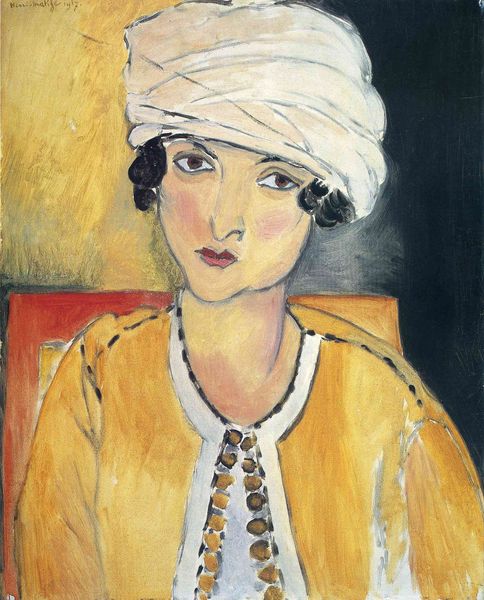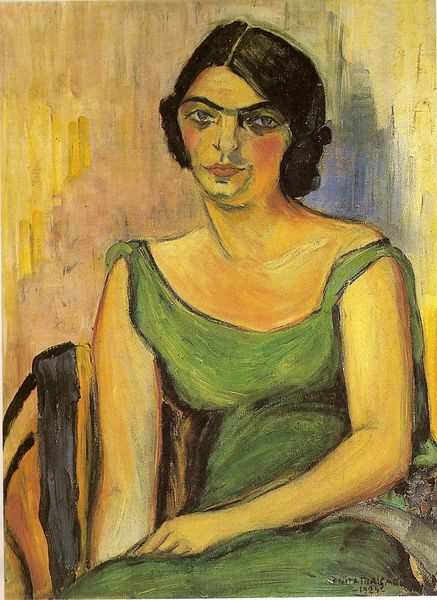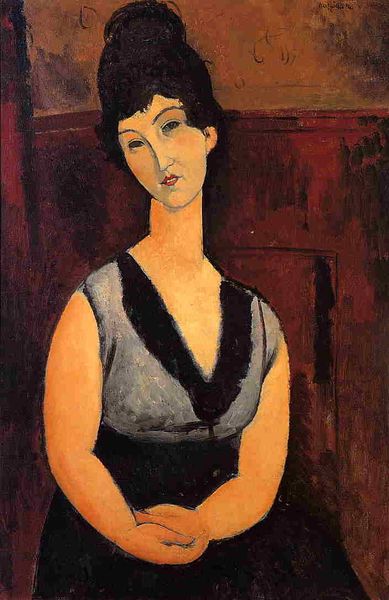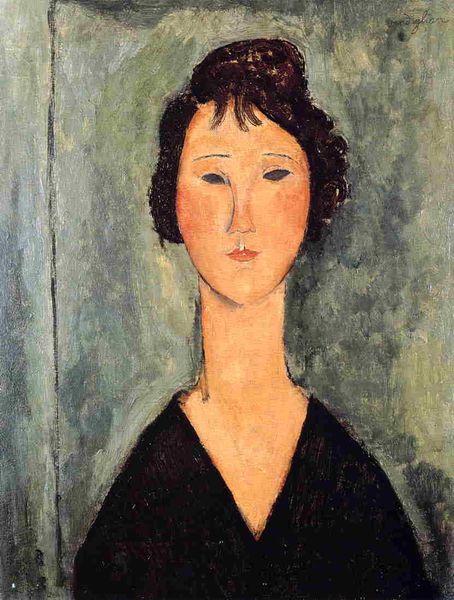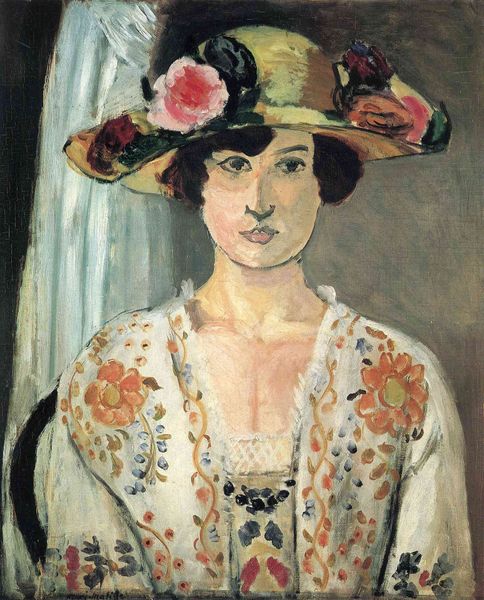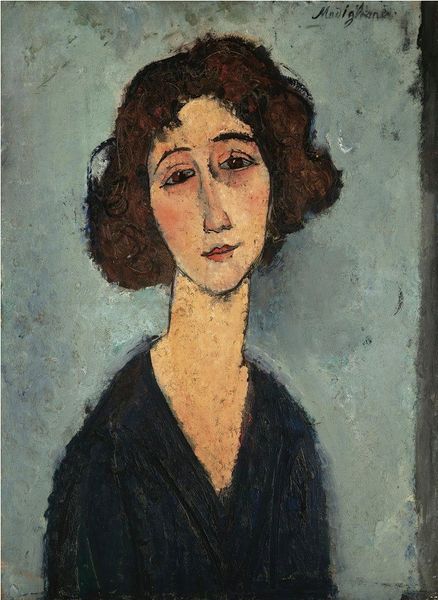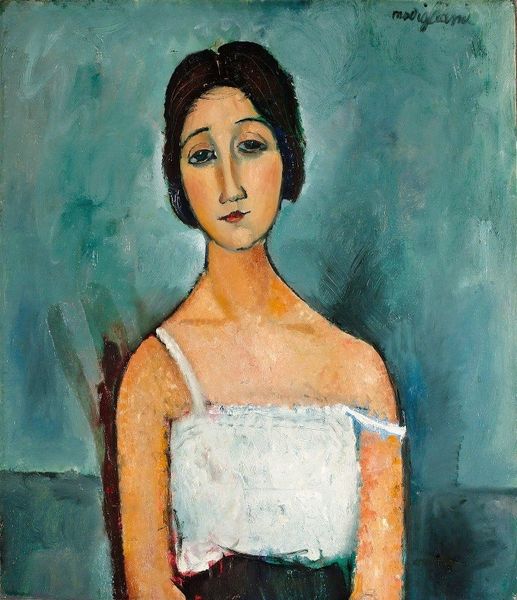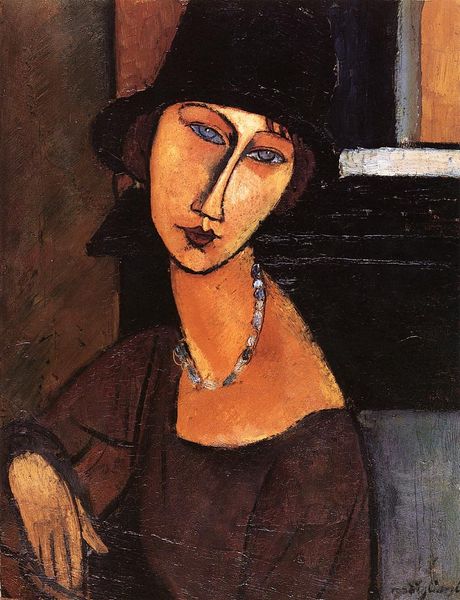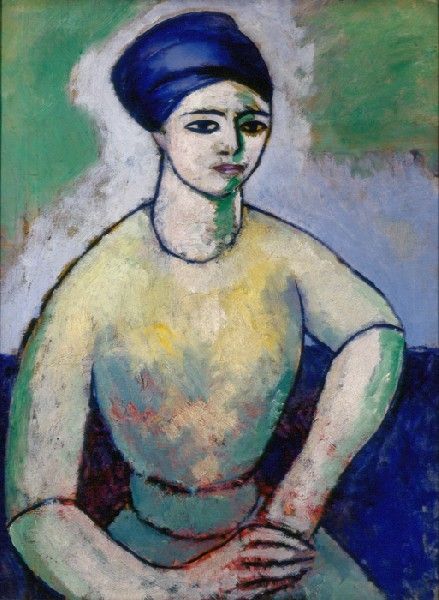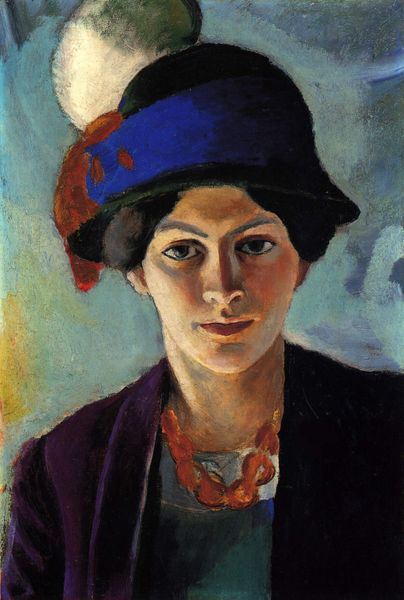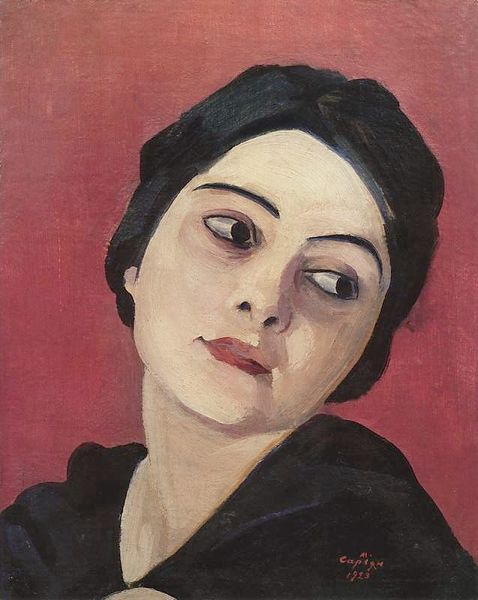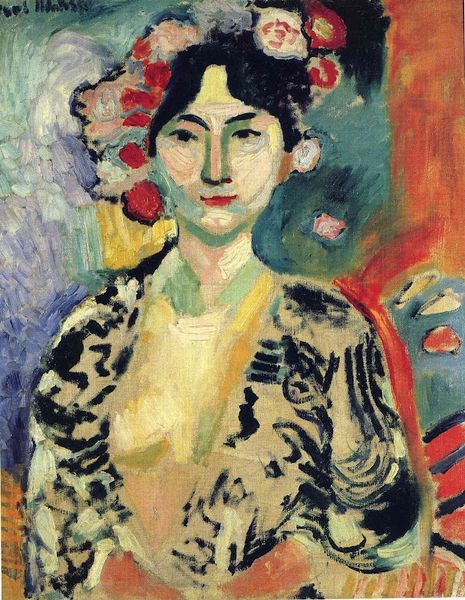
Copyright: Public domain US
Curator: So, we're standing in front of Henri Matisse's "Woman in Turban (Lorette)," painted in 1917, an oil painting residing here at the Baltimore Museum of Art. Editor: It's immediately striking, isn't it? The bold, almost simplified forms. It feels so direct. Curator: Precisely! Look at the textures, the way the oil paint is applied, almost crudely. We see how Matisse is focusing more on the material and its manipulation than precise representation. The flattening of space emphasizes the two-dimensionality of the canvas. How does that relate to societal expectations of women and art production at the time? Editor: Well, during World War I, societal roles were in flux. Perhaps this somewhat flattened, almost stylized portrait is a reflection of a world being reshaped, away from pre-war ideals of beauty and representation. We also must acknowledge how galleries exhibited paintings such as this at the time of making in hopes of maintaining and shaping public imagination. Curator: Good point! Notice the stark contrast between the cool blues and greens of the background and the warmer yellows of the chair and the woman's skin tones. This use of contrasting color elevates this above a simple portrait, as you said before; it allows it to function as a vehicle to examine and display how various visual structures shape one's perception. Editor: The turban, though. It's almost aggressively white against that muted backdrop, acting almost as a mask to show or hide personality as deemed fit by its wearer and circumstance. Was it a common fashion? Curator: Turbans did experience some moments of increased vogue as fashion trends but Matisse perhaps would have considered them less of an accurate portrait of reality than a means of distorting it, drawing the eye and flattening her image even more to emphasize her constructed presentation. Editor: It all comes together, though. This interplay of color, form, and that unsettling stillness creates this potent image. I think understanding its place in the timeline of artistic movements after impressionism helps see how different schools of thought worked toward constructing meaning within visual production. Curator: Indeed, examining it from material, social, and historical points of view enriches the work far more than merely appreciating it at face value. Editor: I concur. Thanks for walking me through it! I feel like I can bring back new perspectives the next time I pass by.
Comments
No comments
Be the first to comment and join the conversation on the ultimate creative platform.
